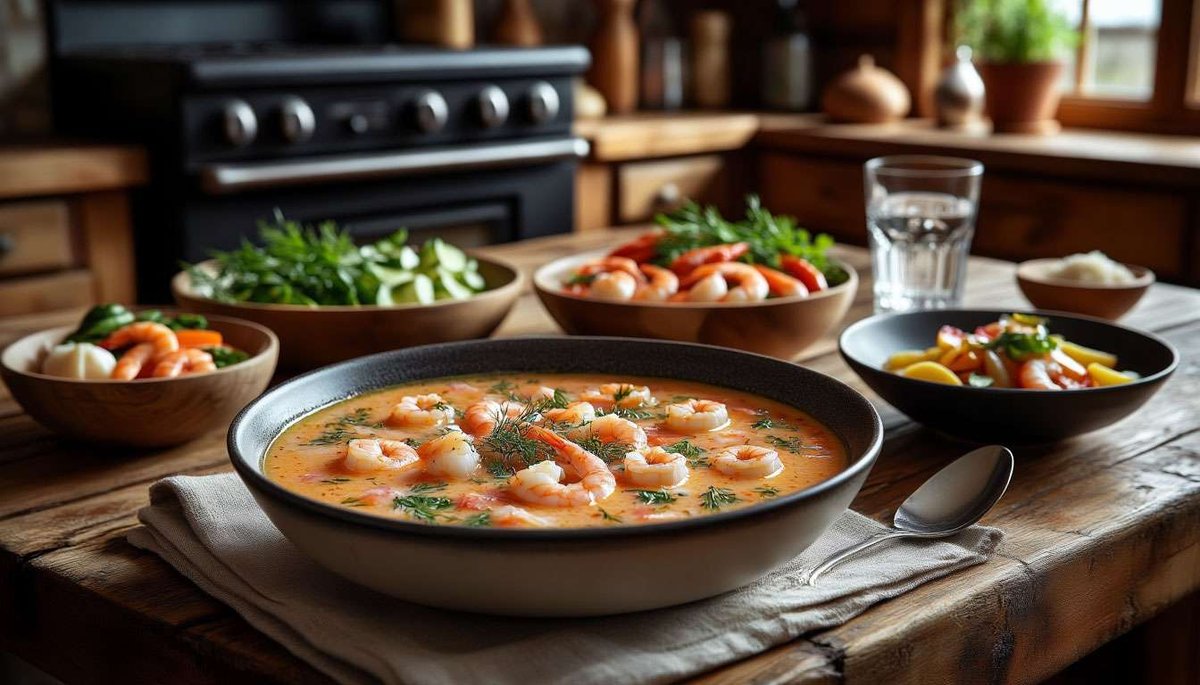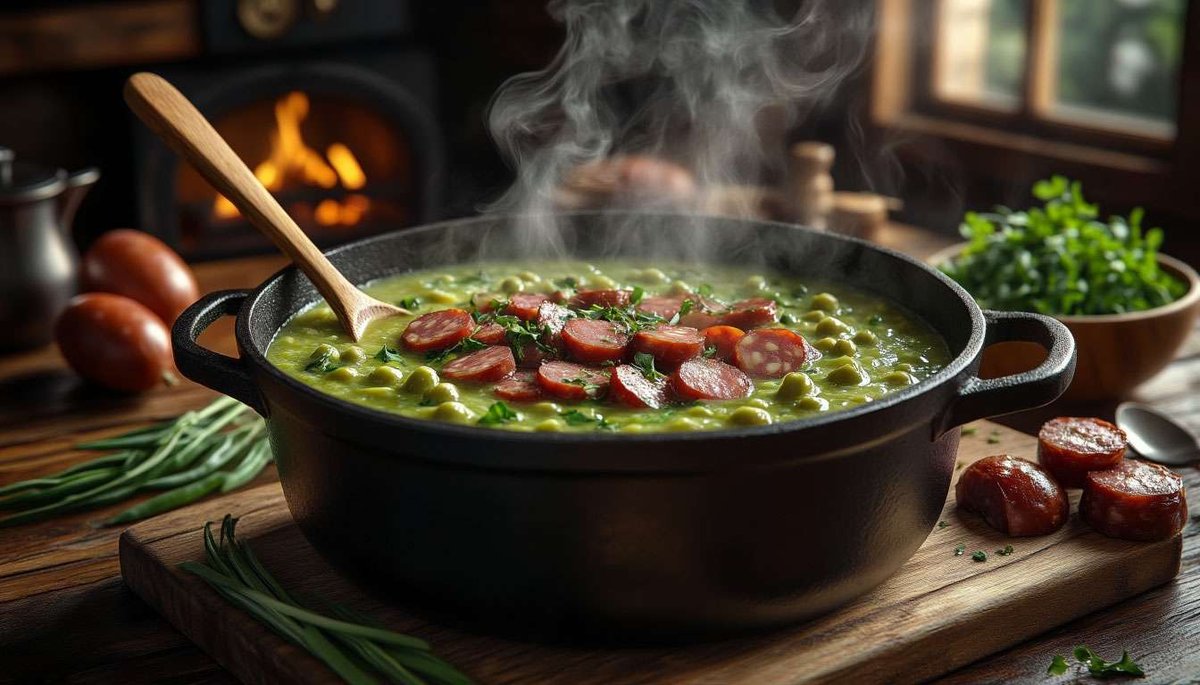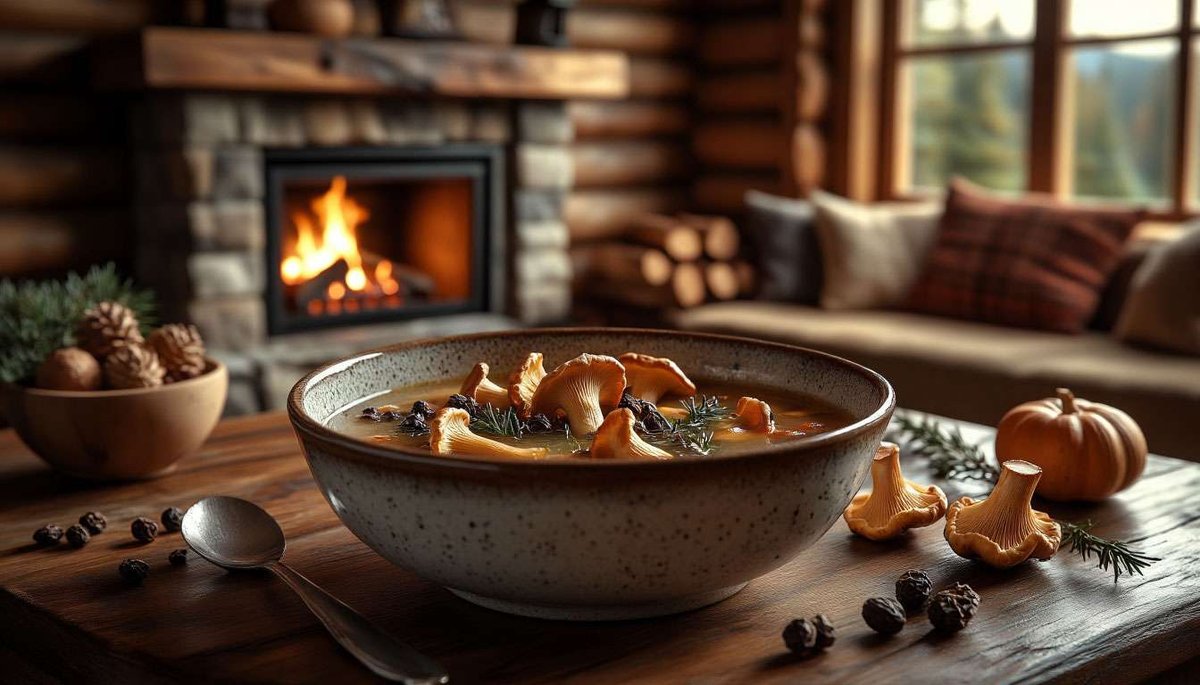Warming Norwegian soups: Fiskesuppe, Ertesuppe and forest mushroom broths

Norwegian cuisine is famous for dishes that warm you up after a windy fjord or ski slope. At the heart of this tradition are soups: they combine the gifts of the sea, forest and garden. From velvety fish Fiskesuppe to thick pea Ertesuppe and seasonal mushroom broth, each soup carries the taste of northern nature and the principle of "simple ingredients, maximum comfort".
What makes Fiskesuppe a signature dish of coastal regions?
Fiskesuppe is a creamy soup made with fish stock and pieces of salmon, cod, shrimp, carrots and leeks. Traditionally, chefs thicken it with flour and add 20% cream and dill oil at the end. The taste is both salty and delicate, without any strong fishy flavour. The best versions can be found at Fiskeriet (Oslo) and Bryggen Tracteursted (Bergen); a 0.4 litre serving costs NOK 165 and is served with rye bread.
How did Ertesuppe pea soup come about and why is it eaten on Thursdays?
Ertesuppe came from Dutch trade in the 17th century, when dried peas became an affordable winter food. In the 18th century, Thursday was a "heavy cooking day" before Lent, so families would prepare a hearty soup with smoked pork or vossakorv sausage. Today, many cafés maintain the tradition of "torsdag = ertesuppe + pancakes": ordering soup includes a thin pancake called Pannekake for dessert (combo 149 NOK).

How does Norwegian mushroom soup differ from that of its Scandinavian neighbours?
Norwegians gather chanterelles and porcini mushrooms in pine forests; they are fried in butter with shallots, then boiled in broth and whipped with cream, leaving some of the mushrooms whole for texture. A special feature is the addition of juniper berry powder, which gives it a pine-like flavour. In autumn, you can try the soup in DNT mountain huts; a serving costs NOK 120 and is accompanied by crispy flatbrød.

What soups should lovers of unusual flavours try?
- Sodd: lamb broth with dumplings — a signature dish of Trøndelag.
- Blomkålsuppe: cauliflower cream soup with caraway seeds, served with fried bacon.
- Lofotsk Fiskeboll-suppe: broth with fish balls, curry spices and carrots — a mix of tradition and the influence of Asian sailors.
How to make classic Fiskesuppe at home?
- Boil the cod heads for 30 minutes with onion, bay leaf and 5 g of salt. Strain to obtain 1 litre of broth.
- Make a roux: 40 g butter + 40 g flour, pour in the broth and cook until thickened.
- Add 150 g of carrots, 100 g of leeks, and 150 ml of 20% cream. Cook for 8 minutes.
- Add 120 g of salmon and cod cubes, 80 g of peeled shrimp, and heat for 3 minutes.
- Serve with dill oil and rye bread.
Where can I find vegetarian or lactose-free versions of Norwegian soups?
- Oslo: Nordvegan serves a "seafood" soup made with kombu seaweed, coconut milk and tofu (142 NOK).
- Bergen: Dwell Kafé offers meat-free Ertesuppe pea soup with smoked paprika.
- Trondheim: Grano replaces cream in its mushroom soup with oat havrefløte; yeast flakes enhance the umami flavour.
Norwegian soups are like a culinary blanket: they envelop you in creamy softness, warm you with spicy notes and give you the strength to explore the northern nature. Try creamy Fiskesuppe on the Bergen waterfront, thick Ertesuppe in a cosy Oslo café, and mushroom broth after an autumn walk in the woods, and you'll understand how simple ingredients can be transformed into a gastronomic embrace that warms even the windiest weather.





2 comments
Log in to leave a comment